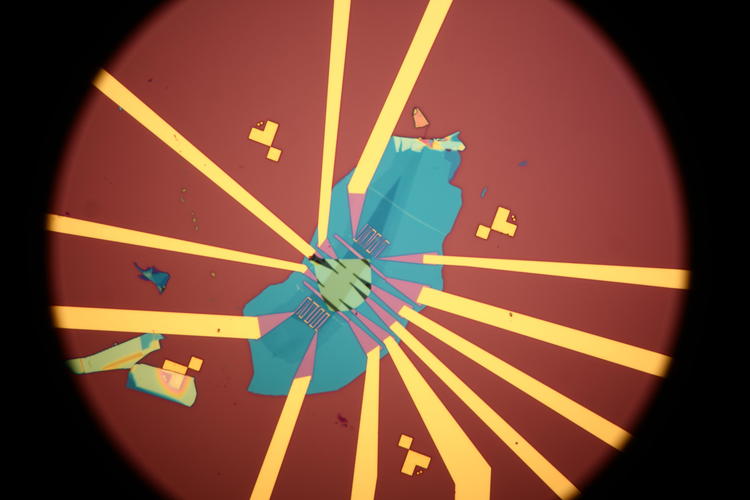
A BSCCO_BN_Graphite stack with three pairs of Nernst probes, one pair of current electrodes, and a dual heater setup.
Cuprate superconductors are a family of high temperature superconductors, and they consist of alternating layers of copper oxides (CuO2) and other metal oxides. Although cuprate superconductors were first discovered in 1980s, the origin of high temperature superconductivity remains unclear to this date. Our lab has investigated the underlying physics of these cuprate superconductors through various transport techniques, such as the Nernst measurement.
In the past, we discovered that the pair condensates in cuprate superconductors survive above the critical temperatures, while the long-range coherence is destroyed by thermally created vortices. [1] The large the Nernst signals were observed above the critical temperature, and their “tilted-hill” profiles were qualitatively distinct from those of quasiparticle. Moreover, the upper critical fields or depairing fields of cuprate superconductors remained independent of temperature. These pieces of experimental findings altogether support the phase-disordering scenario.
Utilizing the advanced nanofabrication techniques, we are currently focusing on thermal measurements on cuprate superconductors in the thinner limit.
[1] Yayu Wang, Lu Li, and N. P. Ong, Nernst effect in high-Tc superconductors, Phys. Rev. B 73, 024510 (2006)
